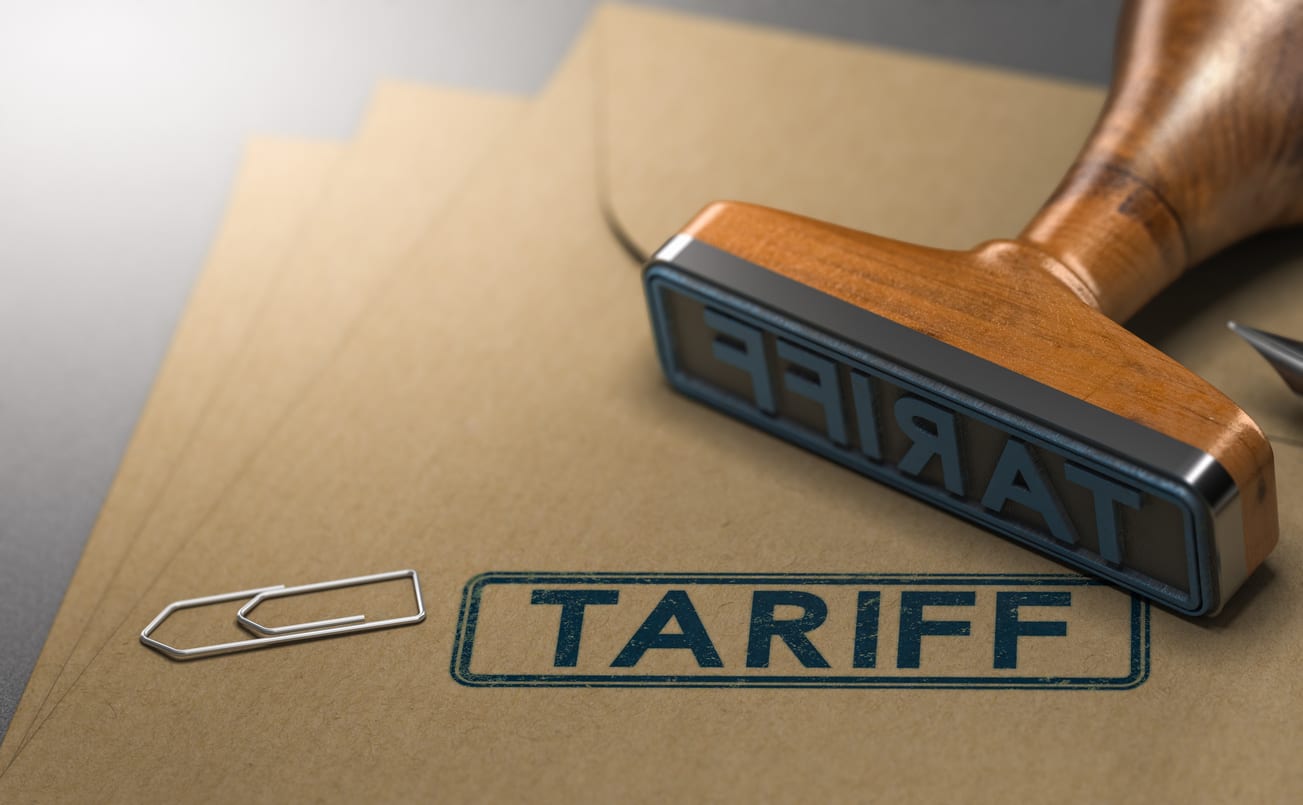Trump's Tariffs: A Looming Threat To European Businesses And Consumers

Table of Contents
Impact on European Businesses
The introduction of Trump's tariffs had a profound and multifaceted impact on European businesses, significantly altering their operational landscape and competitive positioning.
Increased Costs and Reduced Competitiveness
Tariffs on imported goods from the US directly increased production costs for many European businesses reliant on US imports as inputs for their manufacturing processes. This ripple effect significantly impacted profitability and competitiveness.
- Higher input prices: The added tariff costs were passed down the supply chain, leading to substantially higher prices for raw materials and components.
- Reduced profit margins: Increased production costs directly squeezed profit margins, forcing businesses to either absorb the losses or raise prices, potentially impacting sales volumes.
- Loss of market share to competitors outside the tariff zone: European businesses faced increased competition from companies based outside the tariff zone, who enjoyed a cost advantage due to the absence of tariffs. This competitive disadvantage led to a loss of market share for some European firms.
Supply Chain Disruptions
Trump's tariffs triggered significant disruptions within established supply chains, forcing European businesses to rethink their sourcing strategies and logistics.
- Search for new suppliers: Companies were forced to invest time and resources in identifying alternative suppliers outside the US, a process that often proved complex and time-consuming.
- Logistical challenges: Sourcing from new suppliers introduced logistical challenges, including longer lead times, increased transportation costs, and potential delays in production.
- Increased transportation costs: Shifting sourcing locations often resulted in higher transportation costs, adding further pressure on already strained profit margins.
- Delays in production: The complexities of establishing new supply chains led to production delays and potential disruptions to manufacturing schedules, impacting overall output and timely delivery of goods to customers.
Retaliatory Tariffs and Trade Wars
The EU responded to Trump's tariffs with retaliatory measures of its own, escalating trade tensions and triggering a trade war between the two economic giants.
- Escalation of trade tensions: The tit-for-tat tariff increases further strained the already delicate relationship between the US and the EU, creating an environment of uncertainty and mistrust.
- Negative impact on both US and EU economies: The trade war harmed both economies, reducing overall trade volume and hindering economic growth in both regions.
- Reduced trade volume: The imposition of tariffs inevitably decreased the volume of goods traded between the US and the EU, impacting businesses on both sides of the Atlantic.
- EU-US trade relations: The trade war significantly damaged the long-standing trade relationship between the US and the EU, creating lasting negative impacts on trust and cooperation.
Consequences for European Consumers
The impact of Trump's tariffs extended beyond businesses, directly affecting the purchasing power and choices available to European consumers.
Higher Prices for Goods and Services
Consumers faced increased prices on a range of goods, due to the added tariff costs being passed down the supply chain. This reduction in purchasing power had significant consequences.
- Increased prices on imported goods: Tariffs led to a direct increase in the prices of imported goods, from consumer electronics to agricultural products.
- Reduced consumer spending: Higher prices for essential and non-essential goods led to a reduction in consumer spending, impacting overall economic activity.
- Inflation: The widespread increase in prices contributed to a general rise in inflation, further eroding consumer purchasing power.
Reduced Choice and Product Availability
Tariffs also led to a reduction in the availability of certain goods and limited consumer choice.
- Shortage of specific products: Some goods became scarce due to the increased costs and difficulties associated with importing them from the US.
- Substitution with higher-priced alternatives: Consumers were often forced to substitute their preferred products with more expensive alternatives, reducing overall satisfaction.
- Impact on consumer satisfaction: The combined effects of higher prices and limited choices directly impacted consumer satisfaction and overall well-being.
Uncertainty and Economic Instability
The uncertainty surrounding Trump's tariff policies created a climate of economic instability, negatively impacting investment and hindering economic growth.
- Decreased investment: Businesses delayed investment decisions due to the unpredictable nature of the trade environment, stifling economic expansion.
- Job losses: Some businesses were forced to reduce their workforce due to reduced profitability and decreased demand, resulting in job losses.
- Economic uncertainty: The volatility and unpredictability caused by the tariffs created a climate of uncertainty, harming business confidence and overall economic growth.
- Slow economic growth: The cumulative impact of reduced investment, job losses, and diminished consumer spending contributed to slower economic growth across the EU.
Conclusion
Trump's tariffs inflicted significant damage on both European businesses and consumers, resulting in increased costs, reduced competitiveness, supply chain disruptions, and diminished purchasing power. The retaliatory tariffs exacerbated the situation, creating an environment of trade conflict and economic instability. Understanding the lasting effects of Trump's tariffs is crucial for navigating future trade negotiations and building more resilient economic strategies. Further research into the impact of protectionist trade policies is needed to prevent similar disruptions in the future. Stay informed about the evolving landscape of international trade and the potential ramifications of future tariff policies, including the effects of potential new tariffs and trade wars.

Featured Posts
-
 11
May 13, 2025
11
May 13, 2025 -
 Exploring The Work And Legacy Of Angela Swartz
May 13, 2025
Exploring The Work And Legacy Of Angela Swartz
May 13, 2025 -
 Fbi Announces Arrest In Multi Million Dollar Office365 Executive Hacking Scheme
May 13, 2025
Fbi Announces Arrest In Multi Million Dollar Office365 Executive Hacking Scheme
May 13, 2025 -
 The Kyle Tucker Report And The Cubs A Fan Perspective
May 13, 2025
The Kyle Tucker Report And The Cubs A Fan Perspective
May 13, 2025 -
 Resident Evil Afterlife Review A Critical Look At The Fourth Installment
May 13, 2025
Resident Evil Afterlife Review A Critical Look At The Fourth Installment
May 13, 2025
